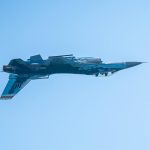China’s Z-20T Helicopter: Decoding Its Advanced Capabilities
The world of aviation, particularly military applications, is in constant evolution. Recently, China offered a rare glimpse into its advancements with the Z-20T assault helicopter. This public display, at a recent exhibition, has sparked considerable interest among defense analysts and aviation enthusiasts alike. What exactly makes this rotorcraft stand out, and what does its enhanced performance signify for regional military dynamics?
Unveiling the Z-20T: A New Era in Assault Helicopters
The Z-20T, a derivative of the well-known Z-20 utility helicopter, represents a significant leap forward in China’s rotorcraft technology. Its recent public demonstration highlighted a range of sophisticated features designed to bolster its combat effectiveness and operational versatility. This unveiling isn’t just about a new machine; it’s about the strategic implications of its advanced design.
Key Technological Enhancements
Several aspects of the Z-20T have drawn particular attention:
Enhanced Aerodynamics and Powerplant
While specific details remain classified, the Z-20T appears to benefit from refined aerodynamic profiles. This likely translates to improved speed, range, and maneuverability. The powerplant, crucial for any helicopter’s performance, is also believed to be significantly upgraded, providing greater thrust and efficiency under demanding conditions.
Advanced Avionics and Sensor Suites
Modern assault helicopters are heavily reliant on sophisticated electronics. The Z-20T is no exception. It is expected to incorporate state-of-the-art avionics, including advanced navigation systems, secure communication arrays, and potentially integrated sensor fusion capabilities. These systems are vital for situational awareness and mission success in complex operational environments.
Armament and Payload Capacity
As an assault helicopter, the Z-20T’s primary role involves troop transport, close air support, and potentially anti-armor operations. Its design likely accommodates a wider array of weaponry, including guided missiles and automatic cannons. Furthermore, its increased payload capacity allows for more troops or heavier equipment to be carried into the theater of operations.
Operational Significance and Potential Applications
The public demonstration of the Z-20T’s capabilities serves multiple purposes. For domestic audiences, it showcases technological prowess and military strength. For international observers, it offers insights into China’s evolving defense posture and its capacity to project power.
Versatility in Mission Profiles
The Z-20T’s enhanced features suggest a high degree of versatility. Consider these potential roles:
- Troop insertion and extraction in contested zones.
- Close air support for ground forces, neutralizing threats.
- Reconnaissance and surveillance missions.
- Medical evacuation under challenging circumstances.
- Potential use in maritime operations, given the Z-20’s capabilities.
Strategic Implications
The development and deployment of advanced platforms like the Z-20T have significant strategic implications. It suggests a commitment to modernizing its air force and expanding its operational reach. This can influence regional security dynamics and necessitate adjustments from neighboring countries and global powers.
Comparing with Global Counterparts
When evaluating the Z-20T, it’s natural to draw comparisons with established international assault helicopters. Several factors are typically considered:
- Performance Metrics: Speed, range, endurance, and service ceiling.
- Avionics and Sensor Technology: Radar, infrared, electronic warfare suites.
- Armament Options: Types of missiles, rockets, and guns.
- Survivability Features: Armor, self-defense systems, and redundancy.
- Cost and Maintainability: Production costs and ease of upkeep.
While direct, apples-to-apples comparisons are difficult without full technical specifications, the Z-20T’s public display indicates it is designed to compete with leading global designs. For more information on the general capabilities of modern military rotorcraft, resources like Defense News offer extensive analysis.
The Future of China’s Rotorcraft Development
The Z-20T is more than just an individual aircraft; it represents a broader trend in China’s defense modernization. Continued investment in indigenous aerospace technology is evident, and this helicopter is a prime example of that progress. The ongoing development suggests a future where China’s military aviation capabilities will continue to advance, posing new considerations for global defense strategies.
In conclusion, China’s Z-20T assault helicopter, as showcased, represents a significant step in its rotorcraft development. Its advanced capabilities in aerodynamics, avionics, and armament position it as a formidable asset. The implications of this technological leap are far-reaching, influencing regional military balances and the future of combat aviation. Keep an eye on further developments in this rapidly evolving sector.
© 2025 thebossmind.com




